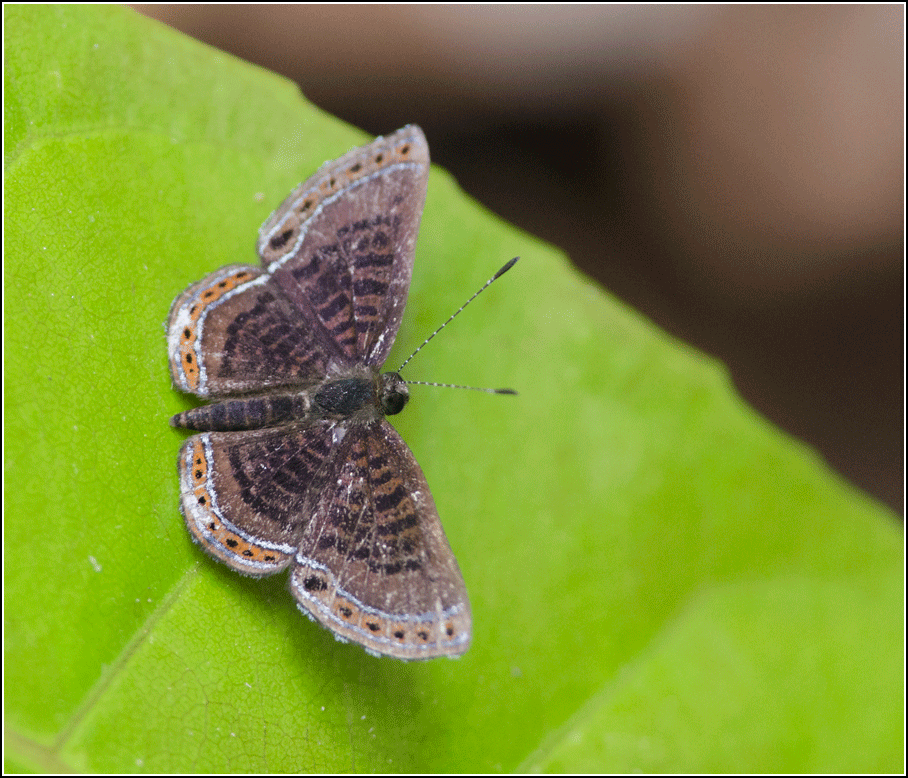----------------------------------------------------
We awoke early once again on our third full day in Gamboa and listened to the town come alive with birdsong. They were mainly common species; many of which I had finally became accustomed to after two long days of birding. I was finding it a lot easier to focus my attention on other sounds when I was out birding, and this would continue with more and more species for the next two weeks as well. It's amazing how being fully immersed in an area's birdlife will do that to you.
We decided on checking out Plantation Road, located further south than Gamboa, closer to the Pacific side of the country. The road we followed had been turned into a hiking/mountain biking trail, and passed through several different forest types, usually mature stands. Because of this the bird life was a little slow getting going in the morning compared to more open areas like wetlands and grasslands. Mature forests tend to have less overall birds, though diversity can still be quite high.
Some of the first birds included the usual assortment of calling motmots, Great Tinamous, toucans, and trogons. At one point I flushed some doves, and after carefully peering through the understorey we found several Grey-chested Doves, my first good look at the species.
 |
| Gray-chested Dove - Plantation Road, Panama |
Several other species of wildlife made appearances throughout the morning. I saw two snakes, both very briefly, however! One was a young Speckled Racer (Drymobius margaritiferus) and the other a young South American Forest Racer (Dendrophidion percarinatum), a species I hadn't seen before. Would have loved to have snagged a photo!
This South American Coati was oblivious to us as it foraged down a hillside. It took a while but eventually picked up our scent! They seem like a tropical version of a Raccoon.
 |
| South American Coati - Plantation Road, Panama |
It's a Steve Pike in its natural habitat.
 |
| Steve Pike in situ - Plantation Road, Panama |
I was quickly getting used to what tropical forest birding is like - very slow periods interspersed with running into a mixed-species foraging flock. Within a few minutes the surrounding woodland can come alive with the chips and calls of the birds in these flocks. One of the more notable birds we came across by birding the mixed flocks included a Gray Elaenia foraging at treetop height. We did not expect to see this species in the canal zone, though there was a tiny dot on the range map.
A nice variety of butterfly species were along the path, most of which I hadn't seen before! Check out this stripe-streak, which I believe is Arawacus aetolus.
 |
| Arawacus aetolus - Plantation Road, Panama |
This is a metalmark of some sort, which I think is in the Detrivora genus. (Detritivora barnesi?)
 |
| Detritivora barbesi? - Plantation Road, Panama |
A few more butterflies from along the road...
Bird photography wasn't always easy, as the dark forest contrasted sharply with the few brightly lit leaves and branches. However, with a cooperative bird at eye level, the shady conditions created nice soft light. This White-whiskered Puffbird was sitting quietly at eye level maybe 15 meters from the edge of the trail. It tolerated our presence and the three of us all came away with some nice photos.
 |
| White-whiskered Puffbird - Plantation Road, Panama |
This was one of my better attempts with the flash. I think I prefer the natural light shots, but it is really hard to get enough light in the dark conditions without boosting the ISO and creating a lot of noise in the photos.
 |
| White-whiskered Puffbird - Plantation Road, Panama |
A female Spotted Antbird provided great looks at the side of the road as well. These birds are usually secretive so we enjoyed our brief looks at this one!
 |
| Spotted Antbird - Plantation Road, Panama |
That evening we headed back to Pipeline Road with a plan of going up the Rainforest Discovery Centre Tower for dusk. Unfortunately my phone died soon after taking photos from the top. The phone appears to be dead for good so you'll just have to take my word that the view of the setting sun over the treetops was spectacular! Hearing the species composition change as the evening progressed was a cool experience. Several raptors were heard and seen from the tower including an Osprey, a Great Black-Hawk (heard only), and a White Hawk (heard only). Parrots began flying an hour or two before dusk, though a big flight never materialized. Nevertheless we had good looks at five parrot species. Howler monkeys walked in the treetops and many passerines visited the flowers growing fully exposed to the sun. One of main targets, the Blue Cotinga, remained elusive. They often perch quietly at the top of a tree in the canopy. Spotting their bright blue plumage is a lot easier from on top of a tower! Luckily we still had some shots at this cool bird in a few more places later in the trip, so we didn't worry too much about this "miss".
The evening concluded with some calling Mottled and Crested Owls and a neat sighting of some night-monkeys on the trail during the walk back in the dark.
The next day we planned to finally cross over to the other side of the canal and drive all the way to the Caribbean side of the country to bird Achiote Road and the Gatun Dam. We would then backtrack to Panama City and drive west to Altos del Maria later in the afternoon, where we had arranged to stay in the mountains with Alfred Raab for a few nights.
Total bird species so far: 213
Total bird species so far: 213




No comments:
Post a Comment